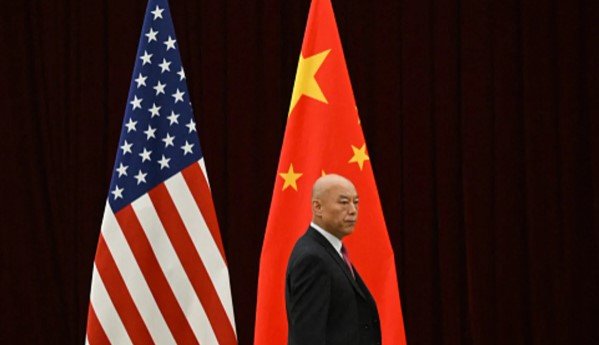The U.S. and China have yet to confirm whether they will extend their current tariff truce, with frictions resurfacing over multiple contentious issues as the fragile pause in trade hostilities nears its expiry.
After bilateral talks in Stockholm in July, Beijing struck an upbeat tone, suggesting both sides were working toward another 90-day extension. But U.S. negotiators indicated the decision ultimately rests with President Donald Trump, who has so far given little sign of his intentions. The uncertainty has fueled fears of renewed escalation between the world’s two largest economies.
The present truce, agreed in May, had rolled back April’s steep 145% tariffs and paused additional punitive duties, creating space for more negotiations. That agreement expires Tuesday.
Currently, Chinese exports to the U.S. face a 20% tariff linked to fentanyl flows, a 10% baseline tariff, and a separate 25% duty on certain goods introduced during Trump’s first term. American exports to China, meanwhile, are taxed at an average 32.6%, according to the Peterson Institute for International Economics.
Neither the Office of the U.S. Trade Representative nor China’s Ministry of Foreign Affairs responded to requests for comment.
Despite the uncertainty, analysts expect a Trump-Xi summit in Beijing in the coming months. “That implies a more stable U.S.-China relationship … but by no means a friendlier one,” said Ian Bremmer, president of Eurasia Group. He warned that both countries are moving “structurally toward decoupling” under the current global trade and geopolitical climate.
Trade, Purchases, and Transshipment
Even with the tariff pause, trade has been visibly strained. Chinese exports to the U.S. fell 21.7% year-on-year in July, marking the fourth straight monthly drop, according to Wind Information. Imports from the U.S. also slumped 10.3% in the January–July period.
Analysts suggest any new deal could see China pledge increased U.S. purchases, particularly in energy, agriculture, and possibly semiconductors, if Washington allows. Julian Evans-Pritchard of Capital Economics noted the likeliest outcome may resemble a “Phase One sequel,” echoing the 2020 agreement in which Beijing committed to $200 billion in extra purchases but fell short due to the pandemic.
Trump signaled his expectations Sunday night on Truth Social, saying he hoped China would “quickly quadruple” soybean orders. Imports of soybeans by China have already surged, rising 36.2% in May, 10.4% in June, and 18.4% in July.
While overall exports to the U.S. are down 12.6% in 2024 through July, shipments to Southeast Asia grew 13.5%, raising scrutiny over possible “transshipment” of goods. Trade experts caution that Trump’s proposed blanket 40% tariff on rerouted goods could weigh further on Chinese exports, though details remain unclear.
Technology and Semiconductor Controls
Trade strains are compounded by disputes over semiconductors. The Trump administration recently reversed a ban on sales of Nvidia’s H20 chips to China, but analysts view it as a tactical adjustment, not a policy shift.
“This is a modest course correction rather than a strategic shift,” said Gabriel Wildau of Teneo. He added that Trump may consider concessions on what some officials view as “excessive” export restrictions in order to reach a deal.
Still, national security concerns loom large. Hawks in Washington warn that advanced U.S. chips could strengthen China’s military and AI ambitions. Beijing, for its part, is pressing Washington to lift bans on high-bandwidth memory chips first introduced under President Biden in 2024.
Meanwhile, Nvidia and AMD have reportedly agreed to hand over 15% of revenue from chip sales to China in exchange for export licenses — a move critics describe as a “monetization of U.S. trade policy,” according to Stephen Olson, a former U.S. trade negotiator.
Rare Earths and Energy Tensions
China’s dominance in rare-earth metals remains another bargaining chip. After negotiations in June, Beijing relaxed restrictions on U.S.-bound shipments, helping global rare-earth exports surge 60% that month to their highest level since 2012. Exports of rare-earth magnets to the U.S. in June soared more than sevenfold, reaching 353 metric tons, customs data showed.
Another looming flashpoint is China’s purchases of Russian crude. Trump has already doubled tariffs on Indian imports of Russian oil to 50%, and hinted China could face similar measures. Beijing’s Russian imports edged up to $10.06 billion in July, their highest since March, though they remain 7.7% lower year-to-date than in 2024.
Adding to the intrigue, Xi Jinping spoke with Vladimir Putin on Friday during his annual summer retreat, ahead of Putin’s scheduled meeting with Trump. “Both Xi and Putin want Trump guessing about what was discussed or agreed,” said Neo Wang of Evercore ISI.
